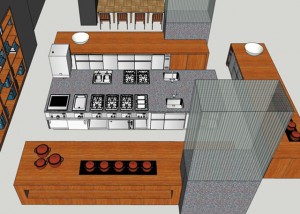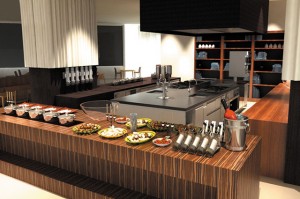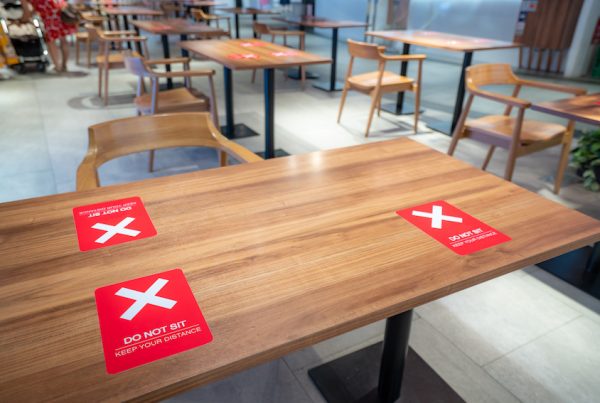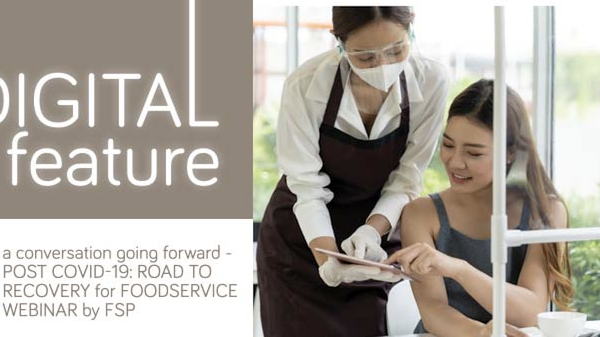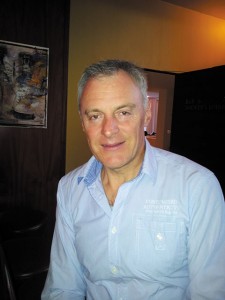 In the eyes of many people, owning a food and beverage establishment is guaranteed to bring in the money. Which explains why society is constantly bombarded with news of the latest food joint and rush to keep up with times, testified by how new kids on the block always seem to enjoy an influx of patrons in their early months of operations. However, most industry experts note that businesses throw open their doors every day and also roll up on an almost equal frequency as new ‘places to eat’ attract the attention of eager diners. Perhaps it’s the food, the location, the efficiency in service or the failure in constructing a kitchen that works seamlessly with the big picture of the establishment. A workable kitchen makes a huge difference – owners can always look for chefs who can best execute the restaurant’s menu concept but without a properly planned kitchen that matches, even the best chef would be hard pressed to perform. As Martin Kuratli, founder of Dishes, watched an American company presenting their design idea for an Asian kitchen some years back, it was apparent to him that the American’s way was not suitable for the Asian style of cooking and he was then invited to join the panel to re-work the design. That single observation motivated Martin to head his own consulting company to bring realistic and practical ideas to aspiring restaurant owners. As a consultant and kitchen designer, one should best advise the client if it does not work and not allow the client “carry you too far with their dreams and hopes” but work the kitchen’s design around the concept yet keeping optimum functionality. His 2 most important aspects involves operational (workflow and processes) and the other being the engineering arm as these are the basic understanding to effectively design a kitchen. The overall design does not only involve the cooking tasks but should take into account the movement of staff and making the environment as comfortable and ergonomic as possible as kitchens can become ‘warzones’ at certain times. For example, make it more comfortable by incorporating a changing room as well as making providences in the working space to accommodate changes in the menu.
In the eyes of many people, owning a food and beverage establishment is guaranteed to bring in the money. Which explains why society is constantly bombarded with news of the latest food joint and rush to keep up with times, testified by how new kids on the block always seem to enjoy an influx of patrons in their early months of operations. However, most industry experts note that businesses throw open their doors every day and also roll up on an almost equal frequency as new ‘places to eat’ attract the attention of eager diners. Perhaps it’s the food, the location, the efficiency in service or the failure in constructing a kitchen that works seamlessly with the big picture of the establishment. A workable kitchen makes a huge difference – owners can always look for chefs who can best execute the restaurant’s menu concept but without a properly planned kitchen that matches, even the best chef would be hard pressed to perform. As Martin Kuratli, founder of Dishes, watched an American company presenting their design idea for an Asian kitchen some years back, it was apparent to him that the American’s way was not suitable for the Asian style of cooking and he was then invited to join the panel to re-work the design. That single observation motivated Martin to head his own consulting company to bring realistic and practical ideas to aspiring restaurant owners. As a consultant and kitchen designer, one should best advise the client if it does not work and not allow the client “carry you too far with their dreams and hopes” but work the kitchen’s design around the concept yet keeping optimum functionality. His 2 most important aspects involves operational (workflow and processes) and the other being the engineering arm as these are the basic understanding to effectively design a kitchen. The overall design does not only involve the cooking tasks but should take into account the movement of staff and making the environment as comfortable and ergonomic as possible as kitchens can become ‘warzones’ at certain times. For example, make it more comfortable by incorporating a changing room as well as making providences in the working space to accommodate changes in the menu.
Yet, concept and working space are not the same as cooking methods. As a former chef, Martin understands that concepts are not game changers in the way of cooking but adoption of technology can make the difference. Opining on technology in line with this issue’s focus on advancement in commercial kitchens, Martin offers that technology can sometimes be overstretched whereby chefs tend to create a dish with so many elements with technology for a dazzling showpiece but he strongly believes that at the end, it’s all about taste. He has also met chefs who are meticulous about design and features but did not project how the menu would be like and equipment might end up underutilised for a chef’s skill is the determining factor of food quality -the chef would probably end up preparing the food without modern equipment! Having said that, Martin does not discredit the importance of equipment as they have truly helped in efficiency but the industry lacks kitchen designers who are trained as a chef for that can provide better insight to knowing what will work and what would not for clients. Especially when “not all equipment are used all the time, there is no need to specify a long list of equipment but prioritise what is necessary first”. This is an unfortunate situation for many clients as consultants are unsure of which equipment they should invest in first and end up pouring in a huge capital but see no return of-investment. In view of that, the consulting company’s standing mantra is “no over- specifying of equipment and no over-designing” for clients. This is vital when today’s kitchen combines technology, equipment and more usage of water and energy than before because no matter how ‘green’ a machine is, it still consumes a reasonably high amount of energy.
With dining out and culinary experiences at an accelerated rate in the Asian region, Martin sees immense opportunity for growth, especially with the implementation of HALAL practices to open the market to the relevant audience and reinforcement of HACCP policies to ensure food hygiene and safety – key points of a community’s awareness towards food; one that is beyond just tasting reasonably palatable and fills them up. Dishes are focusing their work in countries like Malaysia, Hong Kong, Singapore, Shenzhen and Bangkok where the residents see eating out as a daily activity and being tourism hubs, key driving forces to a thriving food and beverage industry. Having been in the European scene, Martin notes that many are not easily coaxed to accept change and adapt to technology as compared to Asia’s status of a growing continent and are less set in their ways. Additionally, regulations are often stumbling blocks in Europe; for example, landlords disallow the tearing down or renovating aspects of their structure while local council may involve a lot of red tape. It is a rather different story in Asia and presents greater room for restaurateurs and consultants to achieve more.
THE EXPERIENCE STRETCHES WORLDWIDE
 Since its incorporation in 2008, Dishes’ rise has been progressive, evident through its involvement in various projects in the Asian region, especially in China where it works regularly with the Grand Hyatt chain of hotels, completing the set-up in Chengdu and Shenzhen with the Shenyang one in the pipeline together with Hyatt Regency’s prospective presence in Wuxi, Xuzhou, Changbaishan. In October 2011, Park Hyatt and Andaz Resorts in Hainan was opened and once again Dishes was invited to work on the Park Hyatt Hangzhou, slated to open in December 2013 while December 2014 marks the projected date for the opening of Hyatt Regency Changchun andShanghai. From China to India, Hyatt Regency Chandigarh opened in March 2012 and Intercontinental Hotel in Juhu expected to be completed by December 2014. Dishes is also having a hand in the development of Hyatt Regency Pune and Hyderabad, Grand Hyatt Noida and W Hotel, Goa. In the popular island retreat of Bali, Indonesia, completed projects include Ritz Carlton, The Terrace, Le Meridien, Westin Nusa Dua Bali and Azzure Hotel Bali. The list also includes the Sheraton D Cube City Hotel in Seoul, Malaysia’s Traders Hotel, Hilton Hotel, Mandarin Oriental, Le Meridien. Dishes has also its hands full for the next few years as it prepares to handle more hotel-related projects in Dubai, Malaysia, Singapore, Vietnam, Thailand and as far as Switzerland.
Since its incorporation in 2008, Dishes’ rise has been progressive, evident through its involvement in various projects in the Asian region, especially in China where it works regularly with the Grand Hyatt chain of hotels, completing the set-up in Chengdu and Shenzhen with the Shenyang one in the pipeline together with Hyatt Regency’s prospective presence in Wuxi, Xuzhou, Changbaishan. In October 2011, Park Hyatt and Andaz Resorts in Hainan was opened and once again Dishes was invited to work on the Park Hyatt Hangzhou, slated to open in December 2013 while December 2014 marks the projected date for the opening of Hyatt Regency Changchun andShanghai. From China to India, Hyatt Regency Chandigarh opened in March 2012 and Intercontinental Hotel in Juhu expected to be completed by December 2014. Dishes is also having a hand in the development of Hyatt Regency Pune and Hyderabad, Grand Hyatt Noida and W Hotel, Goa. In the popular island retreat of Bali, Indonesia, completed projects include Ritz Carlton, The Terrace, Le Meridien, Westin Nusa Dua Bali and Azzure Hotel Bali. The list also includes the Sheraton D Cube City Hotel in Seoul, Malaysia’s Traders Hotel, Hilton Hotel, Mandarin Oriental, Le Meridien. Dishes has also its hands full for the next few years as it prepares to handle more hotel-related projects in Dubai, Malaysia, Singapore, Vietnam, Thailand and as far as Switzerland.
Upholding the philosophy of not compromising on the efficiency of a workspace and matching it as best as possible to the establishment’s concept, Dishes is focused on not diluting the importance a chef’s skill but instead designing a kitchen that enables them to continue being creative yet have what is absolutely necessary to complete a service more efficiently and keeping it realistic for an operator to sustain the business in the long run.
SERVICES provided by DISHES:
Full Food Service Design inclusive of:
- . F&B concept assistance
- . Area planning
- . Schematic designs
- . 3D presentations as required
- . Full design development
- . Comprehensive service on tender phases
- . Installation checks
- . Commissioning and handover
- . Full Laundry Design Service
(same as food service design but without F&B concept assistance)
[box style=”rounded” border=”full”]DiSHES SDN BHD (792624-X)No. 22 Jalan Semenyih, Sentral 1 Semenyih Sentral, 43500 Semenyih, Selangor, Malaysia.
Tel : 603 8723 3118 Fax : 603 8723 0018 Email : info@dishes.com.my Website : www.dishes.com.my[/box]


